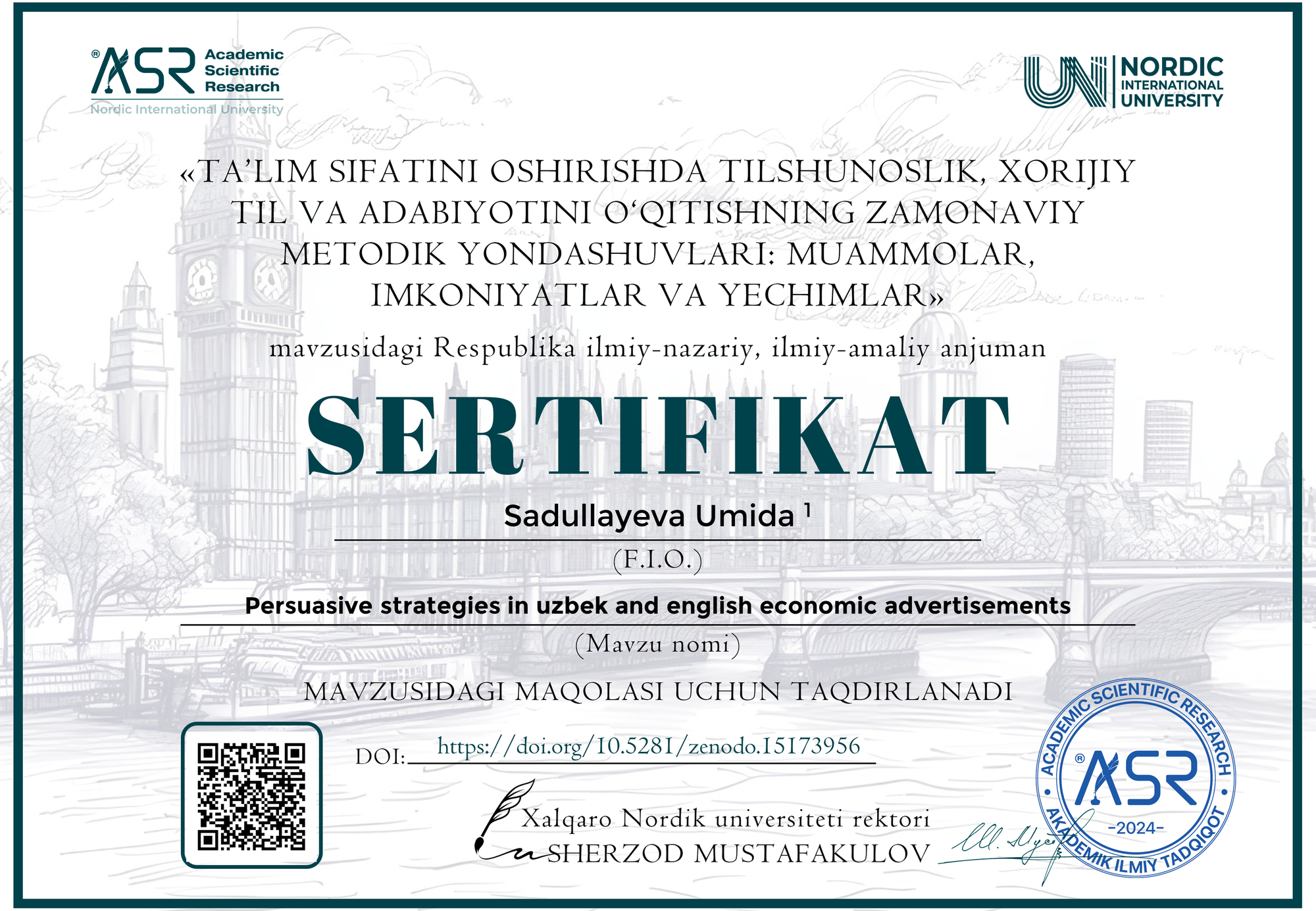Sadullayeva Umida 1

DOI: https://doi.org/10.5281/zenodo.15173956
Google scholar: https://scholar.google.com/scholar?hl=ru&as_sdt=0%2C5&q=%22PERSUASIVE+STRATEGIES+IN+UZBEK+AND+ENGLISH+ECONOMIC+ADVERTISEMENTS%22&btnG=
Zenodo community: https://zenodo.org/records/15173956
Nordic_press journal: https://research.nordicuniversity.org/index.php/nordic/article/view/2258
MAQOLANI YUKLAB OLISH
SERTIFIKATNI YUKLAB OLISH
REVIEW:
This research paper provides a thorough comparative analysis of persuasive strategies employed in Uzbek and English economic advertisements, approached through the lens of pragmatic theory. The author successfully integrates linguistic theory with cultural insights, examining how cultural values influence advertising discourse in different sociolinguistic contexts.
Strengths:
Clear Structure and Research Questions: The paper is well-organized, with clearly defined objectives and research questions that guide the analysis throughout the article.
Integration of Pragmatic Frameworks: The study skillfully applies theories from Grice, Brown & Levinson, and others to real-life advertising examples. Concepts such as speech acts, implicature, deixis, and politeness strategies are critically examined.
Rich Comparative Analysis: The comparison between Uzbek and English advertisements is insightful, especially the contrasts between direct vs. indirect strategies, politeness norms, and emotional appeals.
Cultural Sensitivity: The author demonstrates deep cultural awareness, particularly in explaining the influence of collectivism in Uzbek discourse and individualism in English communication.
Comprehensive Coverage: The inclusion of humor, authority figures, digital trends, and gender roles adds breadth to the pragmatic investigation.
Areas for Improvement:
While the theoretical references are strong, some sections could benefit from additional data or visual tables comparing examples.
A brief summary of key pragmatic terms in a glossary might help non-specialist readers.
Occasional syntactic refinement (e.g., simplification of long sentences) could improve clarity.
Conclusion:
This is a valuable and well-researched contribution to the fields of pragmatics, cross-cultural communication, and applied linguistics. The author demonstrates both scholarly rigor and applied relevance, offering insights useful for linguists, advertisers, and translators.



